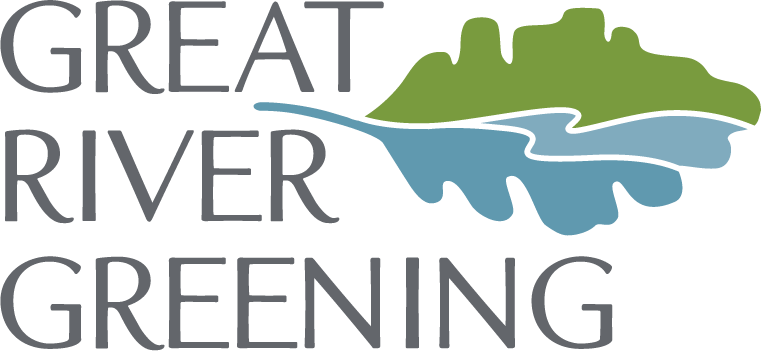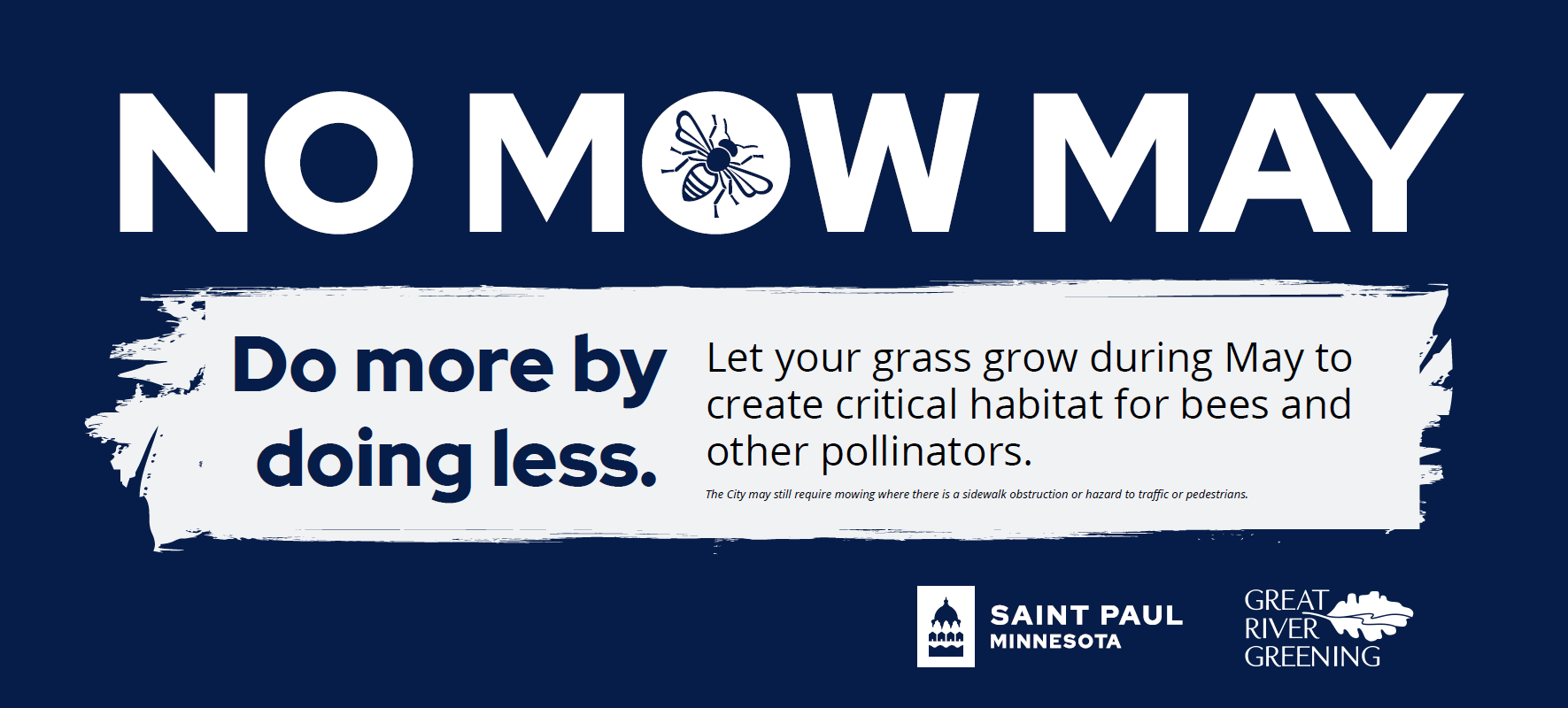What’s the Buzz About No Mow May?
Did you know that Minnesota is home to more than 500 species of bees. These bees (and other pollinators, too!) rely on flowering plants that bloom early in the season for food to survive and thrive. One common problem is that many urban and suburban areas have plenty of turfgrass, but not enough flowers for our pollinators.
Not mowing your lawn in May gives the flowers a chance to bloom and provide nectar and pollen for our pollinator friends. Some May-blooming plants you may already have in your yard include dandelions, clovers, violets, and chickweed.
So, skip the mowing for a bit, and watch a pollinator paradise bloom before your eyes.
YOUR CARBON FOOTPRINT. Reducing mowing also means reducing greenhouse gas emissions. Did you know that running a gas-powered mower for an hour produces the same amount of emissions as a 100-mile car trip?
CHEMICAL USAGE. If you participate in No Mow May, it’s also critical to stop the use of insecticides or other pesticides in your yard. Let’s provide chemical-free food to the pollinators we’re trying to attract.
THE MIX. If your lawn is mostly grass and lacking in the flower department, consider mixing it up! Try sprinkling a flowering seed mix on your lawn, planting more native species in your garden, or adding a native tree or shrub to your yard.
HOW TO START MOWING AGAIN. When you start mowing again in June, be sure to follow the best practices for bringing down grass length while maintaining a healthy lawn. Mow late in the day when the grass is dry, mow down in small increments (1/3” at a time), and rake up excessive clippings to keep them from going into the streets and negatively impacting water quality.
BEE Sure to Consider…
While No Mow May can be a good start, pollinators need flowers all season, not just in May. Consider planting additional native plants to bloom throughout the year.
ENHANCE YOUR TURF. The more flowers growing in your yard, the more nectar and pollen available for pollinators. The University of Minnesota Extension is a helpful resource on what species to plant and how to maintain a bee lawn.
MINIMIZE LAWN TO MAXIMIZE HABITAT. Another approach is to dedicate some areas of your lawn to native wildflowers. Picture this—foundation plantings, boulevard gardens, raingardens, a pocket prairie, or even a meadowscape—the possibilities are endless!
TREES FOR BEES. Native trees and shrubs are an often-overlooked, but critical, source of early resources for pollinators. Planting just one native tree or shrub can make a big difference. Some great choices include: willows, native maples, dogwoods, the rose family (wild plum, serviceberries, and chokeberries), and fruits/berries (apples, pears, cherries, blueberries, raspberries, elderberries, and honeyberries).
READY FOR COMMITMENT? Consider staying on this eco-friendly lawn routine year-round. By converting your turfgrass you can reduce lawn maintenance by needing less fertilizer (or other chemicals), less water, and less time spent mowing.
Beyond No Mow May: What’s Next?
Web: Bee City USA “Welcome Pollinators to your Lawn with No Mow May”
Book: “Native Plants of the Midwest” by Alan Branhagen
Book: “Bringing Nature Home” by Douglas Tallamy
Fun: University of Minnesota Bee Lab “QUIZ: Which Minnesota Pollinator Are You?”
Technical Guidance/Funding Sources: MN Board of Water and Soil Resources “Residential Pollinator Habitat”
For a built-in community of people with experience landscaping with native plants, check out the Wild Ones chapter where you live.
Additional Resources:






